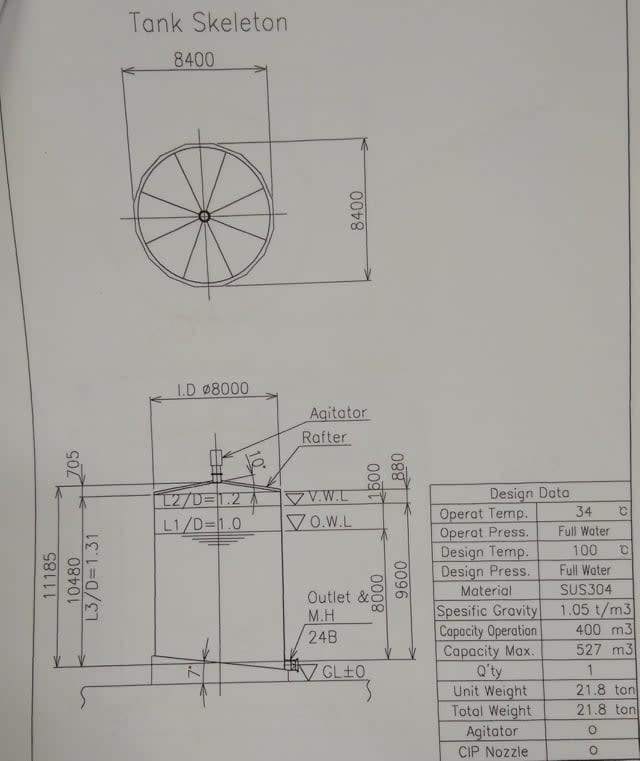Good day, Engineers!
For example, I already designed the tank with 1 foot method and Annex V at API 650. The thickness are 12mm, 10mm, 8mm, and 8mm. The tank has roof frame without column and has agitator at the center. Is there any other computation for additional thickness for shell plates or to check if the shell plates can carry the vertical loads like roof frame without column, and an agitator at the center.
Thank you, Engineers! God bless.
For example, I already designed the tank with 1 foot method and Annex V at API 650. The thickness are 12mm, 10mm, 8mm, and 8mm. The tank has roof frame without column and has agitator at the center. Is there any other computation for additional thickness for shell plates or to check if the shell plates can carry the vertical loads like roof frame without column, and an agitator at the center.
Thank you, Engineers! God bless.

